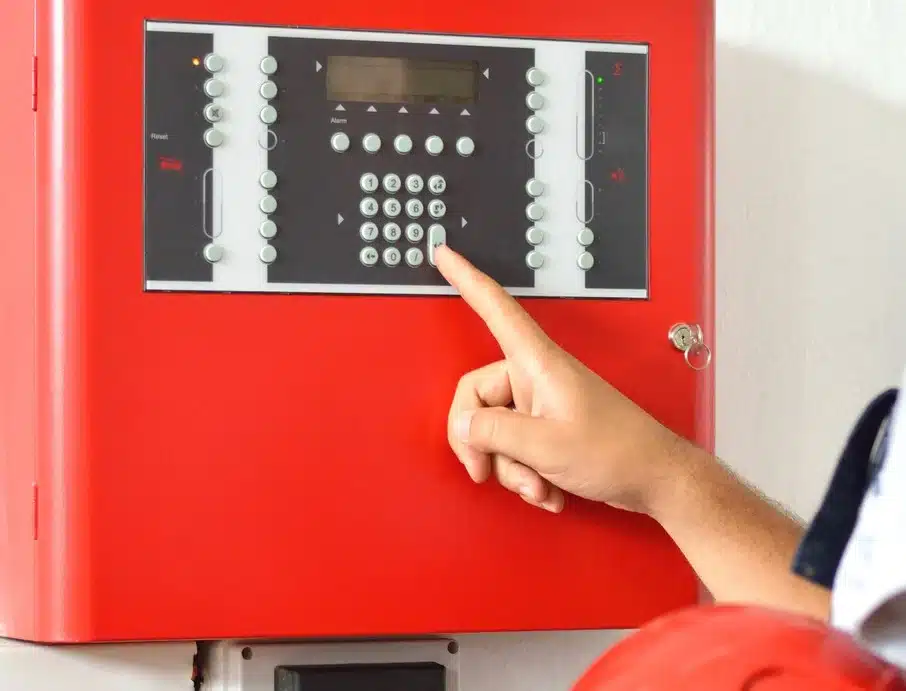The safety of buildings and their occupants is a critical concern for facility managers, building owners, and tenants. In the event of an emergency such as fire, explosion or natural disaster, life safety systems play a crucial role in protecting people’s lives and minimizing property damage. Effective life safety systems are designed to detect potential hazards early enough to alert building occupants and provide sufficient time for evacuation. As such, it is important to prioritize safety with reliable life safety systems that meet industry standards and comply with local regulations.
In this article, we will discuss the key components of reliable life safety systems that can help ensure the protection of building occupants. We will also examine the benefits of investing in these systems for both commercial and residential properties.
Additionally, we will explore how compliance with safety regulations can be achieved through proper installation, maintenance, and testing of life safety equipment. By prioritizing safety through these measures, building owners can create a secure environment for their tenants while protecting themselves from liability associated with accidents or emergencies.
The Role of Life Safety Systems in Building Safety
Life safety systems play a critical role in ensuring building safety, as they are designed to detect and respond to potential life-threatening emergencies. These systems include fire alarms, sprinkler systems, emergency lighting, and exit signs. They are essential in alerting occupants of a building about potential dangers and providing them with the necessary information to evacuate safely.
Apart from the installation of life safety systems, it is also crucial for building owners to train employees on how to use these systems effectively. This training should cover topics such as emergency response procedures, evacuation plans, fire extinguisher usage, and first aid.
Additionally, integrating technology into life safety systems has become increasingly important in recent years. This includes the use of smart sensors that can detect smoke or carbon monoxide levels and automatically trigger an alarm or notify emergency services. By prioritizing safety through reliable life safety systems and employee training programs that incorporate technology advancements, building owners can ensure that their facilities provide a secure environment for occupants.
Key Components of Reliable Life Safety Systems
The effectiveness of life safety systems is dependent on the proper installation, maintenance, and integration of key components such as fire alarms, sprinklers, and emergency lighting. System maintenance is crucial to ensure that all components are functioning properly and can respond promptly in case of an emergency. Regular inspections should be conducted to check for any defects or malfunctions that may compromise the system’s reliability.
Emergency response is another critical component of reliable life safety systems. The system must be designed to provide clear instructions to occupants during an emergency situation. This includes the use of visual and audio signals to alert people to evacuate the building safely. Furthermore, there must be a backup power source in case of a power outage so that the system can continue to operate during an emergency situation. In conclusion, proper installation, regular maintenance, and effective emergency response strategies are key components of reliable life safety systems that can help ensure the safety and well-being of occupants in buildings.
Benefits of Investing in Life Safety Systems
Investing in robust life safety measures can provide building occupants with a sense of security and protection against potential hazards. This investment is cost-effective in the long run as it minimizes the risk of property damage, injury, and loss of life. For instance, fire alarms, sprinkler systems, smoke detectors, and emergency lighting are essential components that can help prevent fires or minimize their impact on people and property.
Apart from cost-effectiveness, investing in reliable life safety systems also provides peace of mind for building owners and occupants. Knowing that there are effective measures in place to mitigate risks associated with natural disasters, fires, or other emergencies gives a sense of comfort and assurance. Additionally, when occupants feel safe within a building environment, they are likely to be more productive and satisfied which has positive implications for business performance. Therefore, investing in reliable life safety systems not only safeguards human lives but also enhances productivity while minimizing costs associated with accidents or damages caused by emergencies.
Ensuring Compliance with Safety Regulations
Ensuring compliance with safety regulations is crucial for maintaining a secure and hazard-free building environment. One of the ways to ensure compliance is by training employees on safety procedures and protocols. This involves educating employees on emergency response plans, evacuation routes, proper use of life safety systems such as fire alarms and extinguishers, among others. Proper employee training not only ensures adherence to safety regulations but also promotes a culture of safety consciousness within the workplace.
Another important measure in ensuring compliance with safety regulations is regular inspections. Inspections help identify potential hazards or malfunctions in life safety systems before they become major problems. Regular inspections can also help improve the overall efficiency and reliability of these systems, ensuring that they are always in good working condition. By conducting routine inspections, building owners can demonstrate their commitment to providing a safe environment for occupants while avoiding costly penalties for non-compliance with regulatory requirements.
Frequently Asked Questions
How long does it typically take to install a reliable life safety system in a building?
The installation timeline of a reliable life safety system in a building depends on various factors such as the size and complexity of the building, as well as any necessary upgrades to existing infrastructure. Cost considerations also play a role in determining the timeline.
Can life safety systems be integrated with other building management systems, such as HVAC or lighting?
Integrating life safety systems with building automation compatibility is possible. One anecdote highlights a hospital’s integrated system where fire alarms are linked to HVAC and lighting controls for quick response.
What types of maintenance and testing should be performed on life safety systems to ensure their continued reliability?
Preventative maintenance and system testing are crucial for ensuring the continued reliability of life safety systems. Regular inspections, functional tests, and performance evaluations should be conducted to identify potential issues and mitigate risks before they become critical.
Are there any insurance discounts available for buildings with reliable life safety systems in place?
Insurance providers offer discounts for buildings with reliable life safety systems in place. According to a study, such buildings have a 50% lower chance of experiencing significant damage from fire or other hazards.
How do life safety systems factor into the overall cost of building construction and operation?
Cost effectiveness analysis is a crucial aspect of building construction and operation. Life safety systems, such as fire alarms and sprinklers, are often required by regulatory compliance requirements to ensure the safety of occupants. Proper installation and maintenance of these systems can help reduce the overall cost of insurance premiums.
Conclusion
Life safety systems are integral to ensuring the safety of buildings and those who occupy them. They consist of various components that work together to detect, alert, and respond to emergencies such as fires, natural disasters, or other threats. These systems must be reliable and well-maintained to function properly in emergency situations.
Investing in life safety systems can provide numerous benefits for building owners and occupants. Not only do they help prevent injuries and fatalities, but they also minimize property damage and reduce liability risks. Compliance with safety regulations is crucial, as failure to meet these standards can result in fines or legal consequences.
According to the National Fire Protection Association, U.S. fire departments responded to an estimated 1,291,500 fires in 2020 alone. This emphasizes the importance of prioritizing safety measures such as reliable life safety systems in all types of buildings. In conclusion, by implementing comprehensive life safety systems and regularly maintaining them, building owners can ensure the protection of their property and its occupants from potential hazards or threats.








